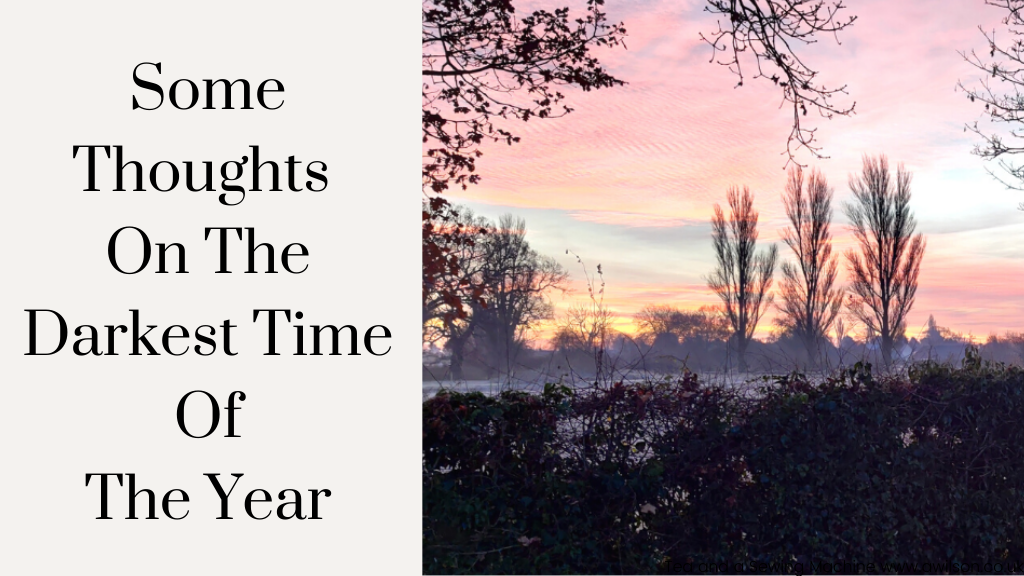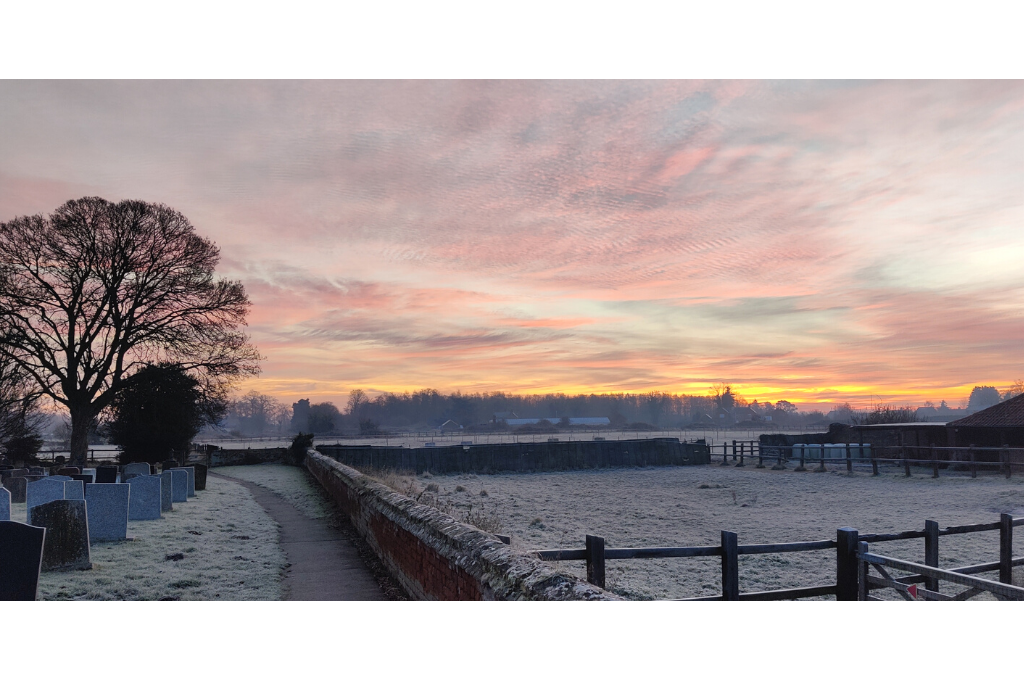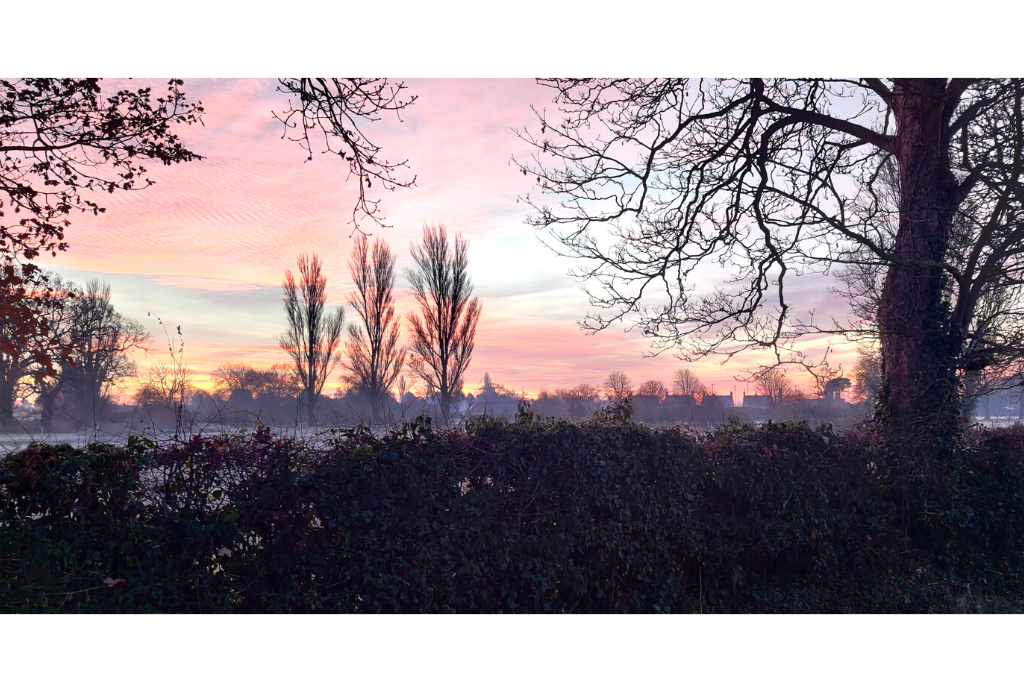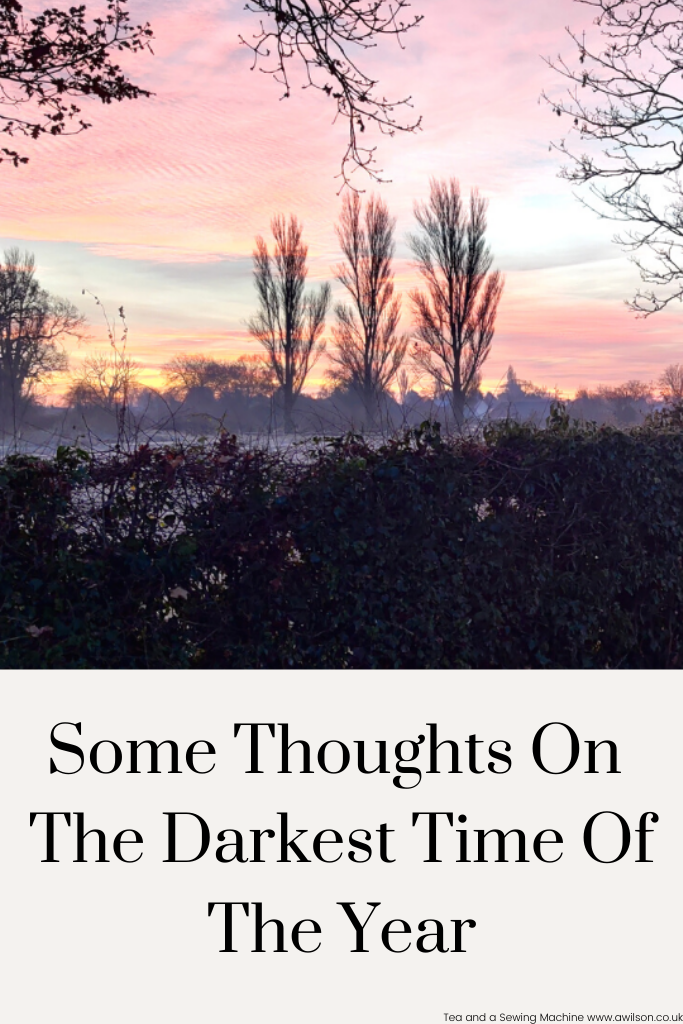
I actually quite like winter, but I know a lot of people don’t.
It’s easy to see why. When I worked outside of the home in a conventional job, one of the worst things was leaving home in the dark, then leaving work in the dark. For a little while, I worked in an office that had no natural light, and it was awful! Unless I made a point of heading outside in my lunch break, I wouldn’t see daylight at all!
Hanging around waiting for buses and trains in the dark and the cold isn’t much fun either, although a warm coat and decent footwear makes improves things quite a lot!
A little while ago, I wrote this post in which I mentioned ways of making enduring the dark and cold more bearable.
One of the things we have to do is accept winter for what it is. It’s no good going out without a coat in the hope that it’s going to be warm! Equally, around midwinter, not only will it be dark by 4.30 (depending on where you live), there will also be days when it doesn’t seem to get light at all.
As I mentioned in the other post, having lamps and cosy spots at home helps.
Here are some other thoughts about the long nights and gloomy days of December and January.

Things Happen in Cycles
At Midwinter, the Earth is at its furthest point away from the Sun. In the Northern Hemisphere, the year is at its darkest with long nights and short, often dark, days. The Earth then starts to swing its way back towards midsummer. The days begin to draw out again, although it only starts to become noticeable in February.
Modern life means that in lots of ways we’ve lost touch with nature and the seasons. We expect to live life in the same way all year round.
This is where it’s worth remembering that things often happen in cycles, rather than in the kind of straight line that can be plotted on a graph. We see it in nature all the time, but for some reason, we’ve forgotten that humans are part of that same created order! And cycles often have a period either actual or metaphorical darkness.
Seeds start in the dark. Buried in the ground, it can look like nothing is happening. But in the dark is where the seed germinates and starts to grow.
Babies grow in the dark. From a few cells, tucked away inside their mothers, babies grow into fully formed human babies.
Jesus was in tomb for 3 days. You might not be religious, but it’s still possible to appreciate the idea of Jesus being in the tomb in the dark for 3 days. His followers thought everything was over. Nobody knows what went on inside the tomb before the resurrection event.
When babies learn to talk, their brains are busiest just before. It’s easy to think that if something isn’t being shown outwardly, that nothing is going on. Parents and educators often massively undervalue the assimilation and absorption stage of learning.
Learning that to happens naturally goes in cycles, not in a straight line. In school learning is expected to occur in a linear way. That’s what OFSTED want to see! But when it’s allowed to happen naturally, learning occurs in fits and starts. And often, an apparent lull or plateau usually precedes a leap, a big idea or a big project, whatever the age of the learner.

The Darkest Months are Part of the Cycle
Maybe it’s fine not to want to be outside, although I would recommend a good, brisk walk in the cold if you’re feeling gloomy!
We can stay at home as much as we can if we want to. We can read and draw, and sew and knit. Resting and not being super productive now can lead to plenty of ideas, plans and productivity later on.
So during the darkest time of the year, I’m going to stay cocooned in my funny old house with my family, and we’ll see what spring brings.



What a lovely post. Thank you.